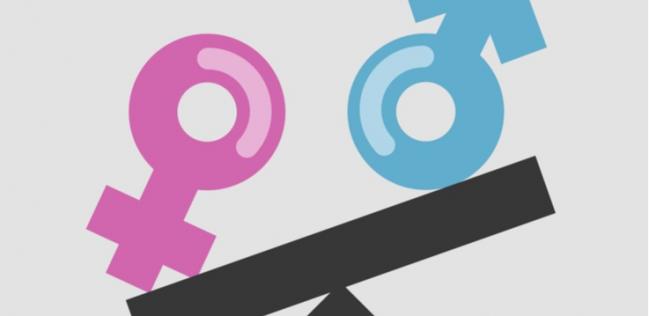Weighing of Female Sex in Stroke Risk Scores Needs Rethink in A-fib
Women with no additional risk factors have a very low stroke risk, something US guidelines should be changed to reflect, researchers say.

Female sex has a strong relationship with stroke risk in patients with nonvalvular A-fib, a new analysis affirms, but the disparity between women and men varies according to the presence of other risk factors, which could have implications for treatment decisions.
When no more than one other risk factor among the components of the CHA2DS2-VASc score was present, there was little difference in stroke risk between men and women, according to researchers led by Peter Brønnum Nielsen, PhD (Aalborg University Hospital, Denmark). But stroke risk was heightened in women when there were at least two other risk factors present, Nielsen and colleagues report in their paper published recently in Circulation.
That’s important considering that there are slight differences between US and European A-fib guidelines in recommendations for use of oral anticoagulation based on the CHA2DS2-VASc score, in which female sex (the “Sc” part) counts for 1 point.
In the European document, oral anticoagulation is strongly recommended in the presence of at least two non-sex risk factors for both men and women, with consideration of such treatment in those with just one additional risk factor. US guidelines, however, contain a strong recommendation for oral anticoagulation in patients with a CHA2DS2-VASc score of 2 or higher, a category that includes men with as few as two risk factors and women with as few as one. Anticoagulation may also be considered—along with aspirin or no treatment—in patients with a CHA2DS2-VASc score of 1, even if that point comes from female sex in the absence of other risk factors.
“Our research highlights that the Sc component [female sex] is essential in evaluating stroke risk in AF patients,” Nielsen told TCTMD in an email. “A source for the confusion is likely related to how the CHA2DS2-VASc score is included in guideline recommendations: if the sum of points exceeds a certain threshold, a recommendation of treatment is triggered. This approach is great when making dichotomous decisions (to treat or not), and in this setting female sex isn’t really that big of a deal.”
The findings of this study, however, “may indicate that the current US guidelines on treatment recommendations should be changed,” Nielsen said, pointing out that women with no additional risk factors had a 1-year stroke risk below 0.5%, “which is likely too low to warrant lifelong antithrombotic treatment.”
No Change to Risk Score Warranted
Nielsen said that much research has focused on verifying the CHA2DS2-VASc in various settings and that there has been some confusion about how best to handle the female sex component. “Female sex as lone risk factor has never been ‘contributing enough’ to warrant lifelong oral anticoagulant treatment, but what is the reasoning for including it in the score?” he said.
To delve into the effect of female sex on stroke risk, he and his colleagues examined data from three Danish nationwide registries on nearly 240,000 patients (49% women) hospitalized with nonvalvular A-fib for the first time between 1997 and 2015; patients receiving oral anticoagulation at baseline were excluded.
The mean CHA2DS2-VA score—which excluded the sex component—was higher in women than in men (2.7 vs 2.3). Consistent with their higher predicted risk, women had a higher rate of ischemic stroke or systemic embolism through 1 year (7.3 vs 5.7 per 100 person-years).
The disparity between women and men varied depending on baseline risk level, however. At CHA2DS2-VA scores of 0 or 1, there were no differences based on sex. For scores of 2 or higher (with the exception of 3), women had a significantly higher event rate through 1 year (P < 0.001 for the interaction with sex).
“What our study provides is numbers that physicians may communicate to female AF patients,” Nielsen said. “This is information that is easily understood by patients, because it may be relatively straightforward to communicate by their doctor.”
A change isn’t warranted to the CHA2DS2-VASc score as currently structured because it could lead to confusion and impede recent progress that has been made in getting patients with newly diagnosed A-fib on treatment, he added, “but our research emphasized the importance of paying close attention to female AF patients who have acquired more than one or two comorbidities, since their stroke risk is significantly higher in comparison to males.”
Todd Neale is the Associate News Editor for TCTMD and a Senior Medical Journalist. He got his start in journalism at …
Read Full BioSources
Nielsen PB, Skjøth F, Overvad TF, et al. Female sex is a risk modifier rather than a risk factor for stroke in atrial fibrillation: should we use a CHA2DS2-VA score rather than CHA2DS2-VASc? Circulation. 2018;137:832-840.
Disclosures
- The study was supported by an unrestricted grant from the Obel Family Foundation.
- Nielsen repots having received speaking fees from Boehringer Ingelheim; consulting fees from Bayer; and grant support from Bristol-Myers Squibb/Pfizer.


Comments